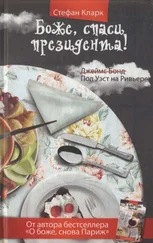Стефан Кларк - 1000 Years of Annoying the French
Здесь есть возможность читать онлайн «Стефан Кларк - 1000 Years of Annoying the French» весь текст электронной книги совершенно бесплатно (целиком полную версию без сокращений). В некоторых случаях можно слушать аудио, скачать через торрент в формате fb2 и присутствует краткое содержание. ISBN: , Издательство: Transworld Digital, Жанр: Старинная литература, на английском языке. Описание произведения, (предисловие) а так же отзывы посетителей доступны на портале библиотеки ЛибКат.
- Название:1000 Years of Annoying the French
- Автор:
- Издательство:Transworld Digital
- Жанр:
- Год:неизвестен
- ISBN:9781407067629
- Рейтинг книги:3 / 5. Голосов: 1
-
Избранное:Добавить в избранное
- Отзывы:
-
Ваша оценка:
- 60
- 1
- 2
- 3
- 4
- 5
1000 Years of Annoying the French: краткое содержание, описание и аннотация
Предлагаем к чтению аннотацию, описание, краткое содержание или предисловие (зависит от того, что написал сам автор книги «1000 Years of Annoying the French»). Если вы не нашли необходимую информацию о книге — напишите в комментариях, мы постараемся отыскать её.
1000 Years of Annoying the French — читать онлайн бесплатно полную книгу (весь текст) целиком
Ниже представлен текст книги, разбитый по страницам. Система сохранения места последней прочитанной страницы, позволяет с удобством читать онлайн бесплатно книгу «1000 Years of Annoying the French», без необходимости каждый раз заново искать на чём Вы остановились. Поставьте закладку, и сможете в любой момент перейти на страницу, на которой закончили чтение.
Интервал:
Закладка:
In short, the frightening thing was that The Sun ’s storm of nonsense about the French smelling of garlic and kangaroos was not merely a yobbish outburst that went against all serious thinking in Britain – it was actually a translation into tabloid language of the British government’s hostility towards France and the EU throughout the Thatcher years. It was quite credible to imagine Mrs T. smiling as she read one of The Sun ’s headlines, just as Charles de Gaulle might well have nodded his approval of a low journalistic punch aimed by a French newspaper at Britain or America.
It is such a shame that the two leaders weren’t in power at the same time. Thatcher and de Gaulle were so alike that their verbal cannonades would have been more explosive than Waterloo.
The disease the French couldn’t catch
Very occasionally, it suits Britain to remember that it’s in the EU, especially when its membership can be used as a weapon against the French. This was never truer than during the mad-cow crisis, which arose during Margaret Thatcher’s time in office (giving the French a chance to brand her a vache folle ), and exploded in the 1990s, shortly after she had been deposed.
It all started in December 1984, when cow number 133 at Pitsham Farm in Sussex began to act strangely. A reliable sanity test for cattle has never been developed, mainly because they can’t lie down on couches and are useless at word association tests (‘What does the word “mother” evoke for you?’ ‘Moo!’ ‘And “father”?’ ‘Moo!’), but cow 133 definitely wasn’t herself. She was staggering about, drooling, arching her back and generally not spending her life chewing and mooing like all her brothers and sisters. The vets weren’t sure what was wrong with the poor beast, but when she died six weeks later, the illness was ascribed to poisoning.
However, more and more cows, both dairy and beef cattle, began to show the same symptoms, and the Ministry of Agriculture realized it had a major problem on its hands. Even so, acutely conscious that the country earned millions from meat exports (Britain was, for example, the biggest exporter of beef into France), the government decided that it was not necessary to panic. Tests were done, and more tests, sometimes by labs that didn’t communicate with each other, and it wasn’t until two years later, in November 1986, that the cows’ staggering about was given a name. It was a new condition called Bovine Spongiform Encephalopathy, or BSE for short.
The problem, as we now know, was that modern farming methods had turned cattle from herbivores into carnivores and even cannibals. Their feed and protein supplements often contained mulched-up meat and bone that was unfit for human consumption, including the brains of sheep suffering from their own, well-documented, form of BSE called scrapie. This appetizing stuff was called meat and bone meal (or MBM – the mad-cow crisis would also cause an epidemic of abbreviations) and it had apparently caused a new sickness to develop in bovines’ already somewhat floppy brains.
Not since a British cow provoked George Washington into evicting the French from America 3had cattle played such a key role in les relations anglo-françaises . Just as in 1754, the stage was set for a major cross-Channel confrontation, and, true to form, it played out in a supremely Anglo-French bout of tit-for-tat point scoring.
Now that the cat (or cow) was out of the bag about BSE, the Brits acted quickly, banning the use of MBM in cattle feed, slaughtering all beef animals before the age of thirty months, and obliging abattoirs to remove and destroy the disease-carrying parts of the carcasses – the spinal column, intestines, brain and bone marrow. Nevertheless, they continued (it is alleged) exporting their stocks of potentially infected animal feed to France.
The EU was fairly lenient on Britain, and in 1989 it banned only the export of MBM, animals under one year old, and any cattle suspected of having BSE. So, although the reputation of British meat had taken a bad beating, in theory it was business almost as usual.
The French, though, were having none of this leniency. They had always suspected that most British food was infecte (disgusting); now it was infecté (infected). Furthermore, they regard brains and bone marrow as delicacies. A Frenchman is rarely happier than when he is scraping the jelly out of a sawn-off chunk of cow’s leg – an os à moëlle . There was no way the French would eat British beef if some of the tastiest bits of the animal were diseased, so they took the logical step and banned it.
For once, the Brits couldn’t really complain about France’s behaviour, and anyway they were engrossed in their own mad-cow panic, as the media bombarded Britain with pictures of vets in sterile bodysuits marching about the countryside massacring any four-legged animal that had a slightly paranoid glint in its eye (and given the scale of the cull, no British cows were looking particularly relaxed).
But when in 1990 the European Union decided that British beef was OK to eat again, it seemed that the country’s surviving cattle had beaten the crisis, like a herd of mooing Winston Churchills. Probably for the first time ever, the Brits were willing to point to an EU law and say how wonderful it was.
France wasn’t going to let Europe force-feed it with British food, however, so it not only upheld its ban but also redoubled its ‘healthier than thou’ stance. The French government refused to acknowledge that its cattle might be vulnerable to BSE – it was a ‘poison anglais’, as one magazine described it. And a new label was created: VBF or ‘viande bovine française’ (French cattle meat), the implication being that French beef was sanest and safest, which it probably wasn’t. The danger sign seemed to be in the VBF logo itself, which was missing the central B – was the designer suffering from BSE or its newly identified human form, Creutzfeldt–Jakob Disease?
The discovery of new variant CJD in 1995 caused a renewed EU ban on British beef that the French adopted with triumphant gusto as confirmation that only cows with Union-Jack-coloured blood could possibly be infected. And when this ban was lifted by the EU, the French refused to comply.
The Brits were so sure of themselves that they adopted French-style tactics. In 1999 farmers blockaded the ports of Plymouth and Poole to stop French lorries landing. Supermarkets announced that they would no longer stock French apples, pears and Brie, and one even cancelled an order for French mistletoe. Meanwhile, Conservative MEPs showed that their party still had a lot in common with Sun newspaper reporters by parading down the Champs-Élysées with a banner saying ‘Let them eat British beef’. It was ‘Up Yours Delors’ all over again.
French politicians continued to insist that they could only trust their own cattle, but by now the policy of denial was starting to fall apart.
In 1999, it was revealed that some French wine producers were using filtering agents that contained dried ox blood. Fourteen wineries in the Avignon region were raided and 100,000 bottles were seized. It was stressed that only low-quality wine was affected, and that there was no problem with the Appellations contrôlées and Vins de table that were usually exported, but the evidence was there; the ‘poison anglais’ had seeped into France’s lifeblood. As one American wine lover expressed it: ‘Is there a tiny chance I could go mad from drinking my 1991 Château Mouton Rothschild?’
Then, in 2000, Britain’s Nature magazine really put the hoof in on French beef. It was very likely, the scientific journal said, that over 7,000 diseased animals had entered the French food chain, and that le boeuf français was far from pure. The subsequent media fallout caused a huge scare in France, and a supermarket was forced to recall massive stocks of French beef after a diseased animal was found at a large abattoir. From now on, French journalists gleefully reported every case of a homegrown cow that couldn’t walk straight.
Читать дальшеИнтервал:
Закладка:
Похожие книги на «1000 Years of Annoying the French»
Представляем Вашему вниманию похожие книги на «1000 Years of Annoying the French» списком для выбора. Мы отобрали схожую по названию и смыслу литературу в надежде предоставить читателям больше вариантов отыскать новые, интересные, ещё непрочитанные произведения.
Обсуждение, отзывы о книге «1000 Years of Annoying the French» и просто собственные мнения читателей. Оставьте ваши комментарии, напишите, что Вы думаете о произведении, его смысле или главных героях. Укажите что конкретно понравилось, а что нет, и почему Вы так считаете.












